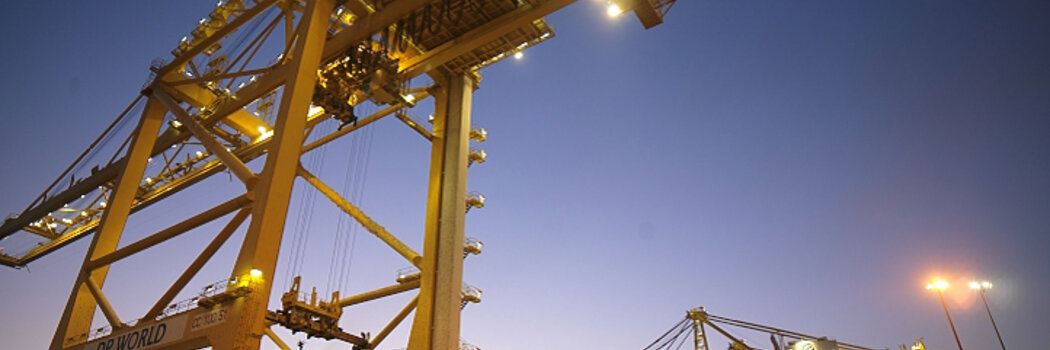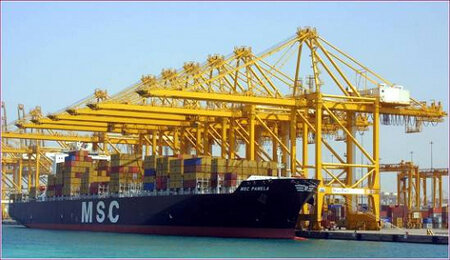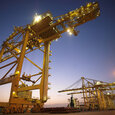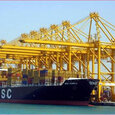
Hardened and reliable MICROSENS solutions for Jebel Ali Port, Dubai
About DP World
DP World is one of the largest marine terminal operators in the world, with 45 terminals and 13 new developments across 29 countries 1. Its dedicated, experienced and professional team of nearly 30,000 people serves customers in some of the most dynamic economies in the world. DP World aims to enhance customers? supply chain efficiency by effectively managing container, bulk and other terminal cargo.
The company constantly invests in terminal infrastructure, facilities and people, working closely with customers and business partners to provide quality services today and tomorrow, when and where customers need them.
In taking this customer-centric approach, DP World is building on the established relationships and superior level of service demonstrated at its flagship Jebel Ali facility in Dubai, which has been voted "Best Seaport in the Middle East" for 14 consecutive years. In 2007, DP World handled more than 43.3 million TEU (twenty-foot equivalent container units) across its portfolio from the Americas to Asia ? an increase of 18% on 2006. It has global capacity of more than 54 million TEU, which is set to increase significantly in coming years with a committed pipeline of expansion and development projects in key growth markets, including India, China and the Middle East. Capacity will rise to around 90 million TEU by 2017.
Jebel Ali Container Terminal 2 / T2
DP World began in 2005 the development on a major new phase of container terminal expansion within Jebel Ali Port. Known as Terminal 2, or simply T2, this massive new facility started operations in 2007. The new terminal is 2.8 km long and has been built just outside the Jebel Ali Port. It is part of an extensive capacity expansion undertaken by DP World to prepare its ports to receive very large ships.
DP World has invested in tandem lift ship to shore (STS) craned and rail mounted gantry (RMG) cranes for the new T2 terminal. These cranes are operated by stateof- the art technologies involving programmable logic controllers, low voltage switchgear, main drive motors, variable speed drives, medium voltage switchgear and transformers.

Wireless Network
The entire new terminal T2 is covered by wireless network to enable online access to the database of the containers. The staff at the terminals is carrying hand held devices with Wi-Fi capability for connection to the central network. The staff managing the containers at the terminal use the hand held devices to enter data of the containers to help them decide on the placement and identification of the containers. To make the operation of the wireless hand held devices possible from any part of the T2, many wireless access points are installed which provide seamless roaming to the users. cable to the wireless access point which is at the top of the pole. In the first phase of the project in mid 2007, eighty industrial switches were installed. In the second phase fifty additional switches will be installed in April 2008.
Fiber Optic Links
The entire T2 terminal is connected by fiber optic cables for reliable communications. All the wireless access points are connected to the DP World network using single mode optical fibers. Due to the critical nature of the operations, every wireless access point is to be connected to the network by using two separate fiber optic cable routes for redundancy. The high-tech cranes need communication links. The electronics on the crane come with a multimode fiber optic interface.
Industrial Switches
DP World chose MICROSENS industrial switches in order to provide network connection to the wireless access points. DP World required fiber optic media converters or switches which could offer the following features:
- Dual Gigabit Ethernet single mode fiber optic uplinks
- Multiple 10 or 100 Mbps Ethernet ports each with PoE capability
- Industrial design to enable operation in an outdoor enclosure under extreme temperature and humidity conditions
After a thorough evaluation, DP World chose MICROSENS industrial switches for their requirement. These switches are installed at the base of poles which are spread throughout the terminal. Each switch has two single mode fiber optic links going in separate routes to the core switches. The switch provides 10/100 Mbps connection and DC via category 6 UTP cables. The electronics on the crane use 100 Mbps multimode interface. To make the link work, DP World needed a mode converter. They chose the MICROSENS mode converters for the single mode to multimode conversion. The cranes need to be connected to the network using single mode fiber optic cable to the wireless access point which is at the top of the pole.
Conclusion
The MICROSENS hardened Industrial Switches are the perfect solution for these extremely hard conditions from the hardware and software point of view. Reliability, smart design, easy installation and user friendly network management are the key facts for the big success.
About MICROSENS
Transmitting information via fiber optic connections offers numerous benefits. MICROSENS GmbH & Co. KG recognised this very early on. As one of the pioneers, the company has developed and produced high-performance communications and transmission systems in Germany since 1993. Individually matched to the demands of diverse usage areas and embedded in comprehensive concepts for individual sectors. But, above all, close to the customer. Technical challenges from customer projects are incorporated directly into product development. This way, IP-based automation solutions are created for modern buildings, cost-efficient network concepts for the office and workspace, robust and fail-safe solutions for industrial environments, optical transport systems future-oriented wide area networks and efficient coupling of sites and computer centres.











